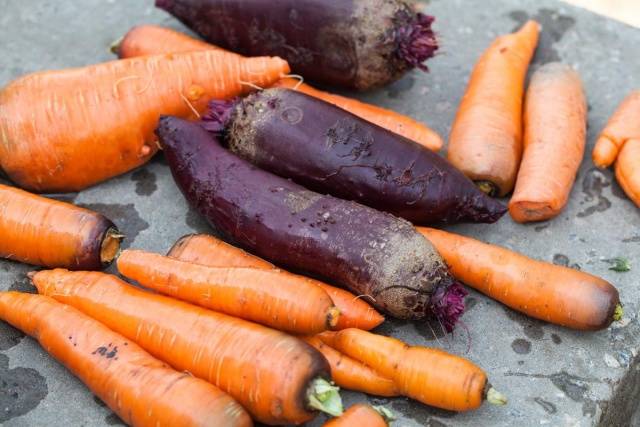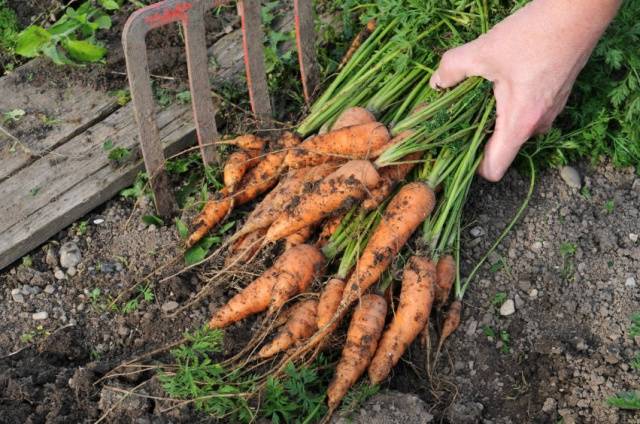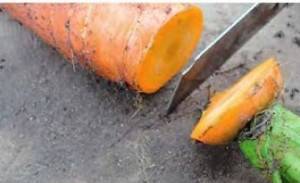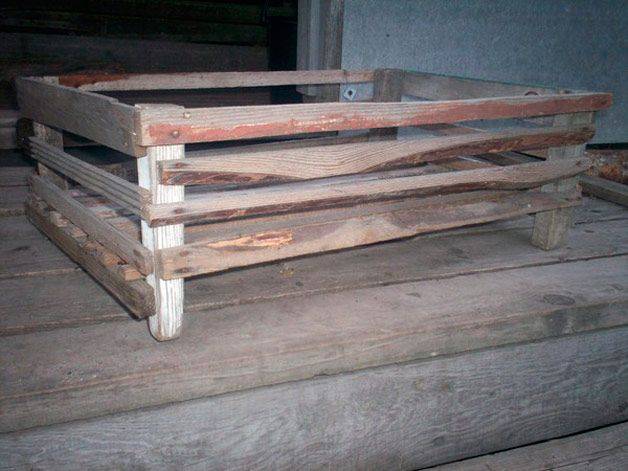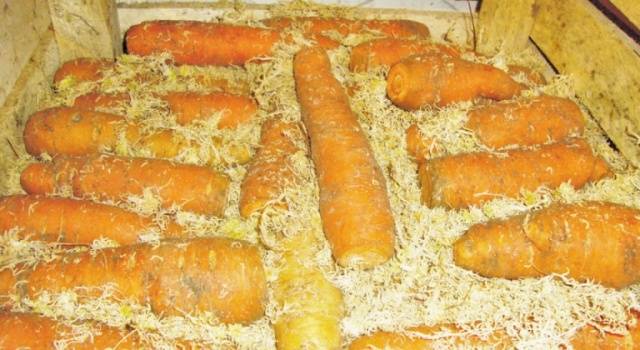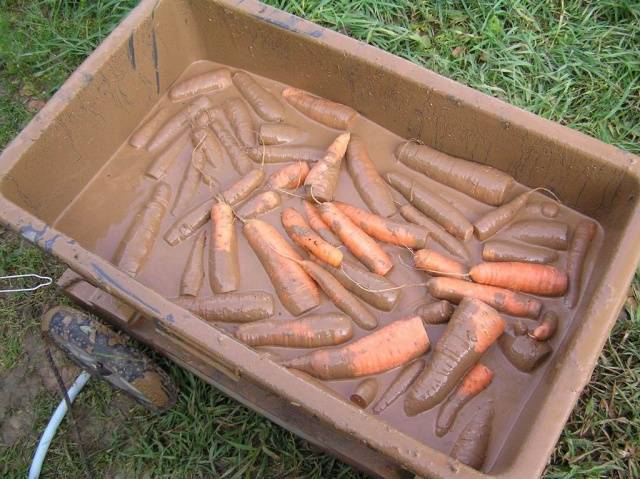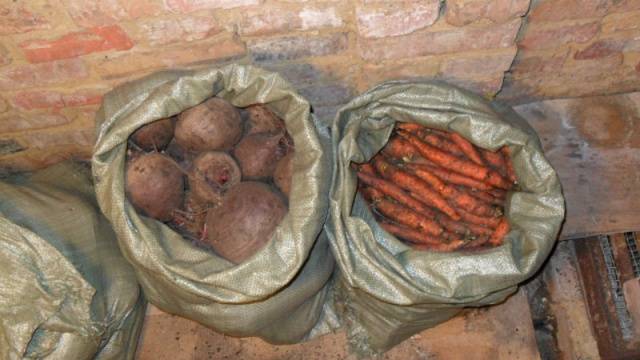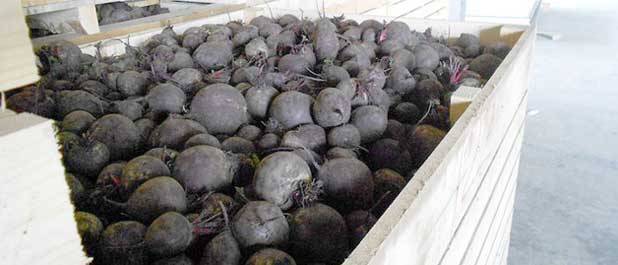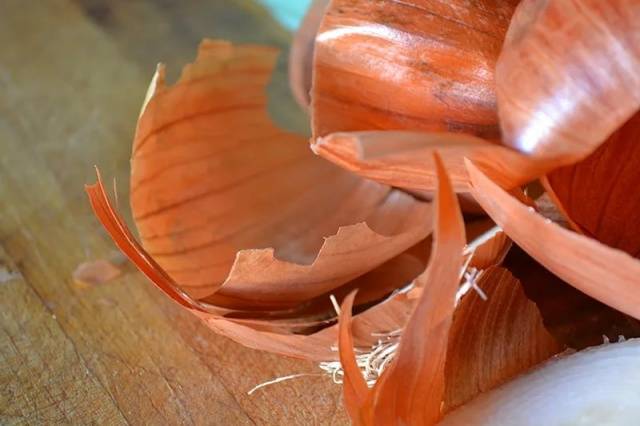Content
Despite the fact that today you can buy carrots and beets in any store, many gardeners prefer to grow these vegetables on their plots. It's just that root crops are obtained as environmentally friendly products, because chemistry is not used in the gardens.
But the grown crop must be saved so that in the cold winter time you can treat yourself to delicious juicy root crops, making salads and other goodies out of them. How are carrots stored and beets in the cellar Russians, what advice do they offer to novice gardeners. This is what will be discussed in our article.
It is not so difficult to grow beets and carrots on the site, subject to agrotechnical practices. The main thing is to preserve the harvested crop. Roots take away in the ripeness phase, when a dense skin is formed on the vegetables, which protects the pulp from damage. During this time, large amounts of nutrients accumulate in beets and carrots.
When to remove vegetables for storage
If you remove the roots ahead of time, then soon they will begin to take out and flab, and then rot. Both vegetables do not tolerate frost, since the top is above the soil surface. As a rule, root crops are harvested in the second half of September (climatic conditions must be taken into account!). You can check the readiness of root crops for harvesting by looking at slightly yellowing leaves.
Cleaning methods
Two weeks before harvesting the root crops, watering is stopped so that the vegetables do not start growing again. Choose a sunny, warm day. For digging in beets and carrots, it is better to use a pitchfork, so there will be less injuries. Having dug up part of the garden, the roots are carefully pulled out by the tops. They are laid out for 2-3 hours on the garden bed itself to dry under the sun.
After that, the vegetables are carried away under the shed and begin to prepare for storage.
There should be no dirt on the vegetables, they are gently wiped with your hand. Many beginners are wondering if root crops need to be washed. The answer is unequivocal - in no case. Just grab the vegetables by the tops and pat them gently against each other.
After that, you need to cut the tops. There are different options for both types of root crops:
- twisting;
- circumcision to a short two-centimeter petiole;
- cutting off the top of the vegetable.
Each gardener chooses a method that is convenient for him.
Sorting takes place at the last stage. For winter storage, medium-sized root crops are chosen. Coarse fibers have already formed in large beets, such vegetables are poorly preserved. The same goes for carrots. In large specimens of dense coarse core, and the taste is not so hot. And small and damaged roots quickly lose moisture, wrinkle, so they are not suitable for storage.
Vegetables sorted for storage do not need to be drained straight into the cellar. The point is that the temperature is still high in the storage. If possible, follow the advice of experienced gardeners, dig a hole and remove the bagged carrots and beets.
Sprinkle on top with soil and throw something waterproof so that the autumn rains do not fall into the pit. When the average daily temperatures drop below 5-6 degrees, vegetables are selected and placed in a permanent place in a prepared cellar or basement.
Cooking the cellar
The collected vegetables are placed in the cellar for storage.Each of the root crops has its own characteristics of keeping quality in winter, but they agree on one thing. The temperature above +4 degrees dries them up, makes them lethargic and flabby.
Before filling the root crops in the cellar, you need to put in perfect order:
- clean the floor of any debris;
- whitewash the walls if necessary (preferably with karbofos or whiteness) in order to destroy possible pests and pathogenic microflora;
- check the operation of the ventilation system;
- prepare racks, containers for folding vegetables, material for sprinkling.
- if necessary, carry out waterproofing and insulation of the cellar.
Storage options for carrots and beets
Carrots and beets have been grown for a very long time. The issue of storing vegetables in winter worried gardeners at all times. Therefore options beet storage and there are a lot of carrots in the cellar. Let's consider the most common options.
General ways
Carrots and beets can be preserved in the same ways:
- In wooden boxes, in plastic containers with a lid. A layer of sand, ash is poured at the bottom of the box, and beets or carrots are placed on top in one row. A layer of filler is again poured onto it. It is advisable not to stack more than three layers of vegetables. Firstly, there is always a risk that diseased roots were overlooked during the bulkhead. Secondly, it will be inconvenient to take. If sand is used, then it must be calcined over a fire to destroy harmful microflora. Experienced gardeners advise adding ordinary chalk to the sand to prevent putrefactive processes. The boxes can be stacked to save space in the cellar or basement. But there is one condition: there must be at least 15 cm from the wall to the container for air circulation. Drawers must also not be installed close to the top shelf. You can put the bottom drawer on the floor, but a ventilation grill is fitted under it.
Sand storage:
Beets and carrots are well kept in slightly moistened sawdust from coniferous trees. They contain phytoncides, essential oils that prevent harmful microflora from multiplying.
- There is another old, time-tested way of storing carrots and beets. True, not every gardener dares to use it - in clay glaze. Dissolve the clay in water in advance until a creamy mass is obtained. Carrots and beets are placed in it separately. Root vegetables are gently mixed so that they are completely enveloped in clay. Take out and dry. The procedure is repeated twice. Thanks to the resulting clay crust, vegetables do not lose moisture, remain firm and juicy. In addition, harmful insects cannot get through such a shell. And mice also do not want to feast on such vegetables.
- You can put orange and burgundy roots in sugar or flour bags. Why is this method so attractive? No separate storage space required on racks or shelves. The bag is simply hung on a nail or hook. In this case, the vegetables are sprinkled with chalk or ash.
- In recent years, many gardeners prefer store beets and carrots in plastic bags. To prevent the vegetables from fogging up, holes are made in the bottom for condensation to drain, and the bag itself is not tied tightly so that air gets in. The fact is that vegetables emit carbon dioxide during storage, which can adversely affect storage. How is such a container convenient? The bag can be placed on a rack, shelf, hung on a hook, or placed directly on top of a potato. But there is also an inconvenience: the content must be constantly checked. If moisture accumulates, you will need to transfer vegetables to a dry bag. But the roots remain dense and juicy. From 1.5 to 5 kg of vegetables are placed in a bag, depending on the volume. Another way to store beets and carrots in bags:
- Some gardeners, laying beets and carrots on storage in boxes, lay the layers not with sand or sawdust, but with gaskets, corrugated cardboard, which are used for apples or tangerines.
- Carrots and beets are well stored in pyramids. But this method requires more space. Sand is poured onto the rack, then vegetables are laid. Sand again and so on layer by layer. The air circulates well in the pyramid, so there is no need to fear for the safety of the harvested crop.
- Root crops can be placed in boxes with plant leaves and herbs that emit volatile phytoncide. This filler prevents fungal diseases and keeps vegetables firm and juicy for a long time. You can use fern, mountain ash, tansy, runny.
Ideal for beets
- An excellent option for storing beets in bulk on top of potatoes. The fact is that potatoes need dry air, but beets, on the contrary, need high humidity. Evaporation from potatoes for beets is a godsend. It turns out that one vegetable remains dry, while the other is saturated with life-giving moisture.
- Unfortunately, few gardeners know about this method. Regular table salt helps to preserve the juiciness of beets. It can be used in different ways: simply pour over vegetables or prepare a saline solution with cereals and dip root vegetables in it. After drying, arrange in the boxes. You don't need to cover. "Salty" vegetables do not dry out, and they are not to the taste of pests and diseases.
Other ways to store carrots
- Dust with chalk powder. For 10 kg of carrots, 200 grams of chalk is needed.
- You can preserve the juiciness of the root crop in onion skins. Vegetables and husks are laid out in layers in a bag. Onion scales, releasing phytoncides, save carrots from rot.
Conclusion
We tried to tell you about some of the ways to store carrots and beets in the cellar. Of course, this is only a small part of the options. Our gardeners are people with great imagination. They come up with their own ways. The main thing is that you can keep fresh roots until the next harvest. If someone has a desire to tell about their experiments, we will only be glad.
